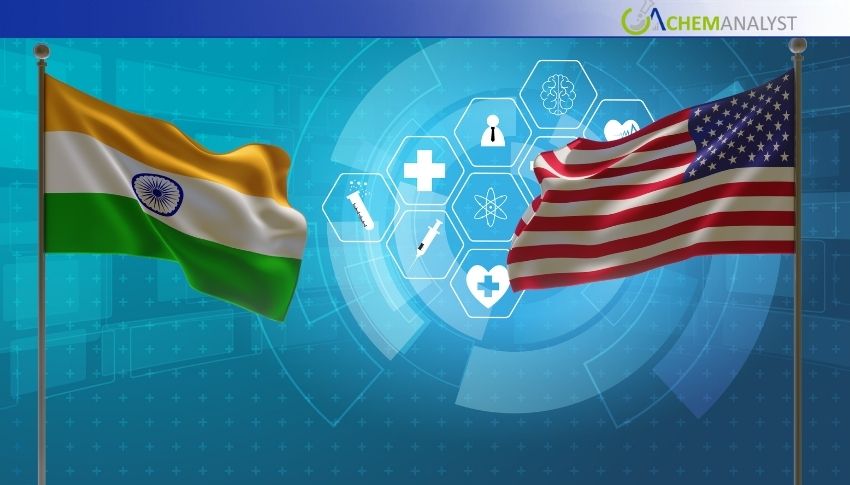Welcome To ChemAnalyst

U.S. President Donald Trump’s announcement of a 25% tariff on Indian exports has raised uncertainty for the pharmaceutical sector, a key supplier of nearly half of America’s generic drugs. While Indian pharma stocks with heavy U.S. exposure may face pressure, domestic-focused companies could remain resilient. Experts warn that if tariffs extend to pharmaceuticals, U.S. healthcare costs may rise sharply, highlighting the risks of disrupting this critical supply chain.
The announcement of 25% tariff on Indian exports by U.S. President Donald Trump has created a lot of controversy in both Indian and American healthcare markets. The shift, which goes into effect on August 1, 2025, also imposes penalties on continued oil and military purchases by India of Russian supplies, further complicating the geopolitical tensions in the dispute over trade. Though it is still unclear whether pharmaceuticals appear on the initial list of products to be affected, there are growing concerns about possible implications on the international drug supply chain.
Pharmaceuthical exports are among the most important trading relationships that India has with the U.S with about half of the American demand of generic drugs being supplied. The United States is the traditional outlet of Indian drug producers and a key source of profits and growth. Indian pharmaceutical firms like Sun Pharma, Dr. Reddy Laboratories, Divi Laboratories, Cipla, Aurobindo Pharma, Lupin, and Biocon are especially vulnerable as they rely heavily on the American market of generics. When tariffs apply to this segment, these companies will have hard decisions to make- whether to absorb these costs, transfer them to the Americans, or re-examine their U.S-focused product lines.
Although the initial effects on the Indian pharmaceutical industry might seem quite minimal, industry leaders are warning that the future repercussions are upon the U.S. healthcare industry. A 25 percent tariff would not only increase the price burden to American citizens but may also lead to drug shortages. The U.S. heavily relies on India as a source of inexpensive medicines, including life-saving cancer medications, antibiotics, and medicines to treat chronic diseases. Any interruption in this supply chain would increase the cost of healthcare and further burden hospital budgets and insurance organizations.
According to analysts, moving pharmaceutical production out of India is not a short-term fix. Building similar capacity in the U.S. or other markets would take a minimum of three to five years taking into account the timelines of regulatory approvals, infrastructure requirements and the cost competitiveness of Indian manufacturers. This exposes particularly the U.S. healthcare sector to the risk of taking near-term shocks in case tariffs are imposed on pharmaceuticals as well.
The general response of the wider market to the announcement by Trump has been mixed. On the one hand, pharmaceutical enterprises focused on exports are likely to experience pressure during future trading sessions.
Other than pharmaceutical business, the medical devices industry in India presents both risks and opportunities. In case the U.S. set tariffs on Chinese devices at higher levels than Indian goods, Indian manufacturers are likely to have a relative competitive advantage on export. Nevertheless, a challenge is posed by competition with countries like Indonesia and Vietnam which enjoy reduced duties. The future growth of this sector will be determined by how well India can enhance its competitiveness, as well as cope with the expensive cost of getting the U.S. regulatory approvals.
According to tax experts, although the threat of tariffs to Indian pharmaceuticals cannot be ruled out, the political and economic sensitivities around healthcare pricing in the U.S. rather suggest that such a move is also unlikely in the short term. The two nations are anticipated to fast-track negotiations on a bilateral trade agreement, which might offer sustainability to the drug industry. Nevertheless, the fact that this period will have an effect on sentiment, with U.S. healthcare providers anticipating increased expenses and Indian drugmakers facing the prospect of a subsequent cycle of volatility.
In the short run, India’s pharmaceutical industry appears resilient, backed by strong fundamentals and global demand for generics. However, should tariffs extend to this sector, the brunt of the impact is expected to fall on the U.S. healthcare system, underscoring the interdependence between the two markets.
We use cookies to deliver the best possible experience on our website. To learn more, visit our Privacy Policy. By continuing to use this site or by closing this box, you consent to our use of cookies. More info.
